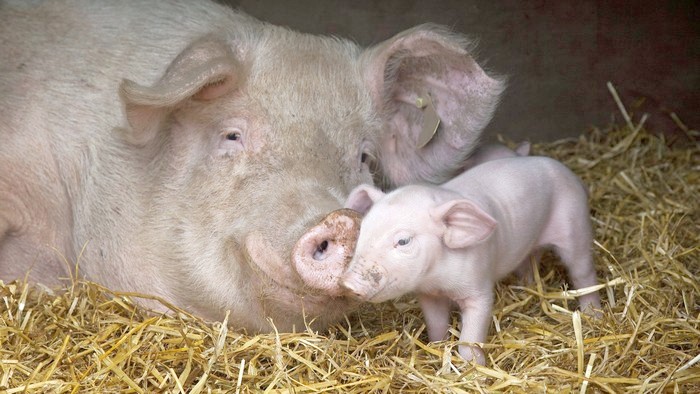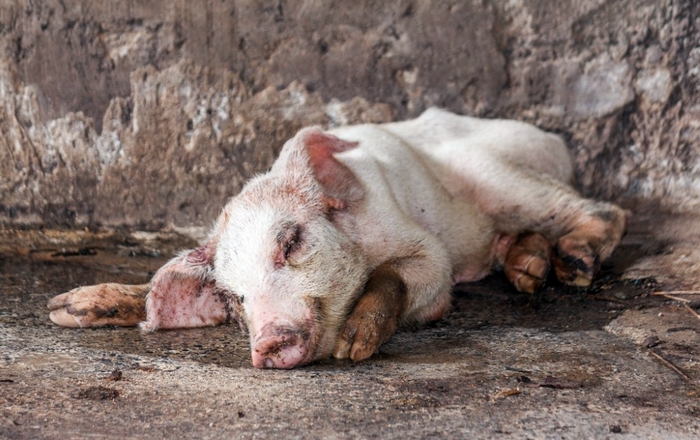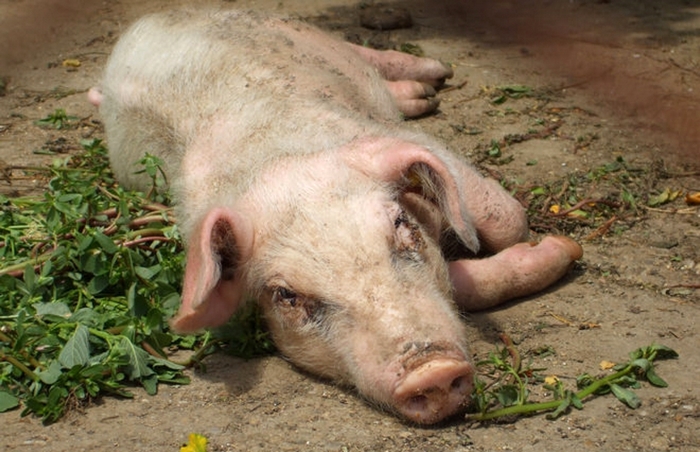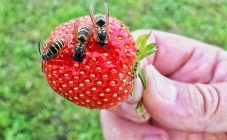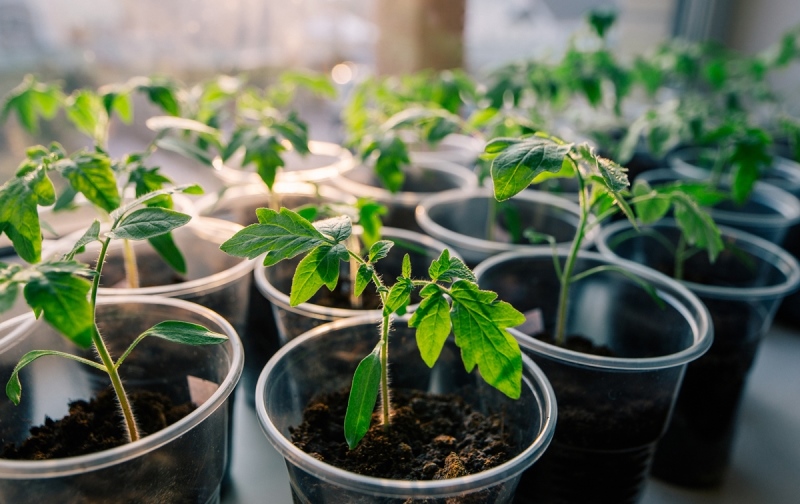Content:
Raising pigs is quite a profitable business, since modern breeds are fertile, the sow pigs a couple of times a year. Thanks to their excellent appetite, piglets quickly gain the necessary weight for slaughter. However, even among the most caring pig breeders it happens that piglets do not eat well and grow up, what should they do then?
Pirrigation and principles of their cultivation
A healthy young pig should have the following basic characteristics:
- smooth pink skin, it is especially noticeable when looking at a hanging ear;
- the snout has a straight, even profile;
- the bristle is distributed equally throughout the animal;
- there are no sagging on the ridge and depressions in the scapular region, the chest is wide;
- the legs have developed joints, uniform, without bulges and rickety underdevelopments, the hooves are strong and shiny;
- the tummy does not sag, there are no roughness;
- the tail is twisted into a spiral, always dry and clean;
- the animal moves a lot and willingly takes food;
- the voice is clear and contented, when the pig is picked up, it squeals loudly.
Animal breeders define several basic principles for raising pigs at home.
First of all, for cubs who are born a little underdeveloped, the temperature regime is important: the temperature at the rookery of the sow and newborn suckling pigs should be at least 30 degrees. This is ensured by high-quality insulation and powerful lamps.
Since the piglets are very weak immediately after farrowing and easily pick up any infections, it is necessary to provide good ventilation in their pen, which will help stop the spread of pathogenic infections.
The pig mother for the first couple of months should be with her offspring and feed him with her milk. If a pig pig is planned to be fattened for meat or lard, they are castrated at the age of 2-3 weeks.
In case of insufficient mother's milk and with a large number of piglets (more than 8) from a week of age, it is necessary to provide the babies with feeding, since during this period they begin to actively gain weight (it should increase by about five times). Babies can eat food at least 8 times a day in small parts, since their stomachs are very small.
Top dressing is introduced gradually, mainly cow's milk (whole and return). Also, in order for the muscle mass of animals to grow faster, they need to be given thick cereals, kitchen waste, as well as juicy vegetables (potatoes, carrots, tops, green grass), chalk and salt are also added according to age norms. A 5-6 month old properly fed piglet on average should grow up to one centner.
After the young animals are 3-4 months old, you can start giving them concentrates and compound feed.
Other important principles by which young pigs are raised are:
- correct preparation of feed: grass should be given fresh, hay - steamed, potatoes - peeled, grain - fried;
- make portions as much as the animal can eat at one time;
- warm clean water should be freely available;
- it is better to make a feed trough from boards, but stainless steel is also suitable;
- it is necessary to add chalk, charcoal and red clay;
- maintaining a comfortable temperature regime;
- walks in the fresh air, starting from 5 days of age, are very desirable.
Causes of lack of appetite and poor growth
A healthy pig, especially a growing piglet, never refuses to eat. However, if this happens, it is necessary to look for the reason why the piglet began to eat poorly, and try to fix it as soon as possible.
Pig breeders identify the main problems:
- parasitic invasion - piglets can develop different types of worms, roundworms and others;
- the pig's menu does not meet their needs or is not balanced;
- infectious diseases;
- containment violations.
Worms, roundworms and other parasites
Parasites are the most common reason why piglets do not grow. Babies can catch the infection near their mother on a litter or during walks. Infection is accompanied by the following symptoms:
- decreased appetite, lethargy appears;
- not gaining weight;
- the piglet coughs, the temperature may rise;
- the animal itches with its tail on all surfaces, becomes restless and aggressive;
- in the manure, you can see wriggling worms.
This problem can be eliminated with the help of chopped garlic, tansy, as well as their mixture in milk, which is poured into the feed for sick pigs.
Infections
Infectious diseases of piglets are caused by viruses or bacteria and always begin with loss of appetite and underweight. Also, the pig's skin becomes dry, the bristle ruffles and stops hanging neatly. Later, the sick animal may have a fever, cough, bloody diarrhea, vomiting and salivation.
In severe cases (for example, with dysentery) there is a lack of coordination, trembling and general weakness. If you suspect an infection, you should isolate the sick animal from the herd and contact your veterinarian.
Imbalance in the diet
After jigging from the sow, problems arise with a lack of one or another element in the feed, as well as the necessary vitamins. An imbalance in the menu in young animals can result in underweight, developmental disorders, diarrhea, and they can even die. One of the frequent consequences of hobby only for cooked food is metabolic disease - pellagra. Its symptoms are:
- delicate pig skin becomes bluish and covered with a rash that forms a crust;
- digestion is impaired;
- the gums become inflamed
- paralysis develops, which can lead to the death of the animal.
A balanced diet of piglets should contain the required amount of protein and lysine - this is the "building material" for growth, they are contained in meal, cake, peas, meat and meat and bone meal, skim milk, yeast.
If the piglet doesn't eat what to do? It is necessary to check the feed for vitamins. So, the main reason for the lack of appetite in young animals may be a deficiency of vitamin D, then the growth of the pig may sharply slow down, and rickets may develop. With a lack of vitamin A, dry skin, problems with the respiratory and digestive systems can be observed. Insufficient content of B vitamins in food leads to a slowdown in the growth of young animals, diarrhea and heart disease.
A big problem for pig breeders is anemia in suckling pigs. Since the blood volume rises with rapid growth, therefore, the hemoglobin must increase, pig breeders should decide from where the animals will receive additional iron (wild relatives of pigs simply eat the earth).
The situation with the imbalance of feed in pigs should be corrected by selecting the correct diet for pets, as well as adding synthetic and natural vitamins and iron preparations (they can be given by injection).
Congenital pathologies
If a piglet is born with any pathologies, it will eat worse than its counterparts and lag behind in height and weight.
In some babies, milk teeth do not grow properly, which prevents them from grabbing the nipple and sucking breast milk, and subsequently chewing solid food. This pathology is corrected by cutting down the interfering parts of the teeth.
Sometimes there are congenital bowel disorders, manifested in constant constipation and rectal prolapse. If such a pig does not grow, it is impractical to treat it, it is better to lower it to the slaughter.
Pig farming is quite a lucrative business. However, sometimes piglets lose their appetite and may even start losing weight. When piglets eat poorly and do not grow, what should a farmer do? First of all, identify the cause (helminthiasis, anemia, congenital diseases, etc.) and try to eliminate it as soon as possible.
